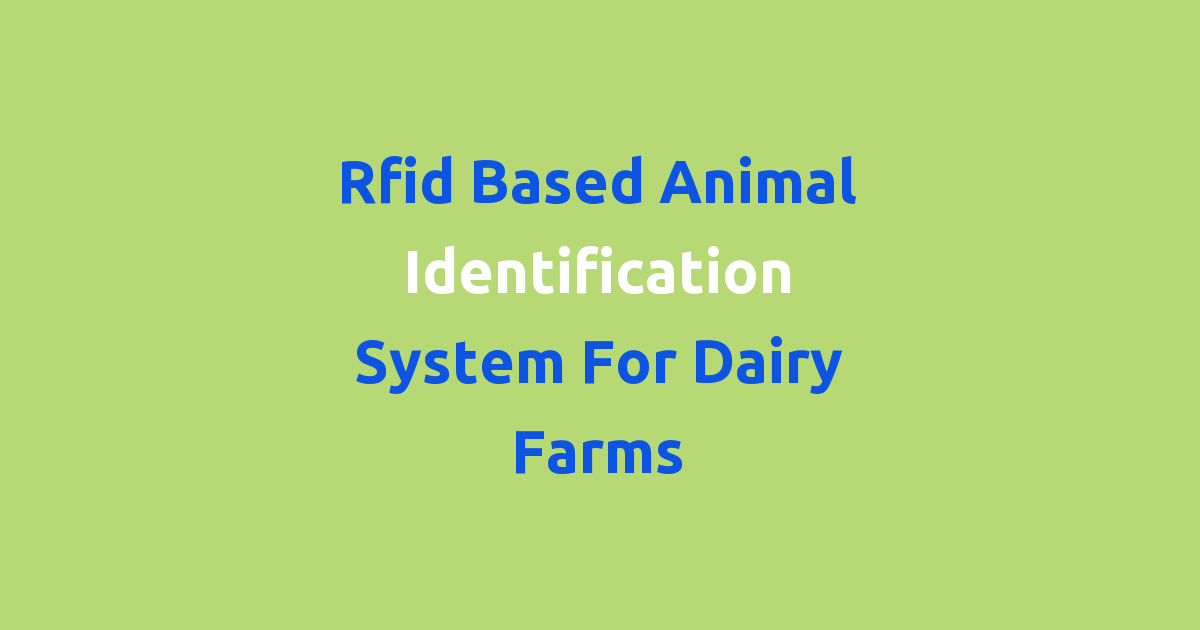RFID technology used for identifying animals in dairy farming.
RFID Based Animal Identification System for Dairy Farms
Introduction
In recent years, technology has been rapidly advancing in various industries, including agriculture. One such technological advancement is the use of Radio Frequency Identification (RFID) systems in animal identification. In the dairy farm industry, RFID technology has proven to be beneficial in monitoring and managing livestock efficiently.
Problem Statement
Traditional animal identification methods, such as ear tags and branding, are often time-consuming and labor-intensive. They also pose risks of infection and discomfort to the animals. Therefore, there is a need for a more efficient and humane system for identifying and tracking animals in dairy farms.
Existing System
The current animal identification system in dairy farms typically involves the use of ear tags with unique identification numbers. These tags need to be manually checked and recorded by farm workers, which can be prone to human error. Additionally, the tags can be lost or damaged, leading to inaccuracies in tracking the animals.
Disadvantages
1. Manual data entry and recording can lead to errors and inconsistencies in animal tracking.
2. Ear tags can be lost or damaged, resulting in unreliable identification of animals.
3. Traditional identification methods can cause discomfort and stress to the animals.
4. Limited data storage capacity for tracking individual animal data.
Proposed System
The proposed RFID-based animal identification system for dairy farms aims to address the limitations of the current system. RFID tags will be implanted in the animals, allowing for automated identification and tracking. The system will be integrated with a central database for storing and managing animal data.
Advantages
1. Automated identification and tracking of animals for improved accuracy and efficiency.
2. Reduced risk of errors and inconsistencies in data recording.
3. RFID tags are durable and tamper-proof, ensuring reliable identification of animals.
4. Improved animal welfare by minimizing discomfort and stress during identification.
5. Increased data storage capacity for tracking detailed information on individual animals.
Features
1. RFID tags with unique identification numbers for each animal.
2. RFID reader devices for scanning and recording animal data.
3. Central database for storing and managing animal information.
4. Automation of data collection and tracking processes.
5. Real-time monitoring and reporting of animal activities.
Conclusion
In conclusion, the implementation of an RFID-based animal identification system in dairy farms offers a more efficient and humane solution for managing livestock. By overcoming the limitations of traditional identification methods, such as ear tags, this system provides accurate and reliable tracking of animals. The proposed system not only improves data management capabilities but also enhances animal welfare on the farm. With its automated features and advanced technology, RFID-based animal identification is indeed a promising technological innovation for the dairy industry.

